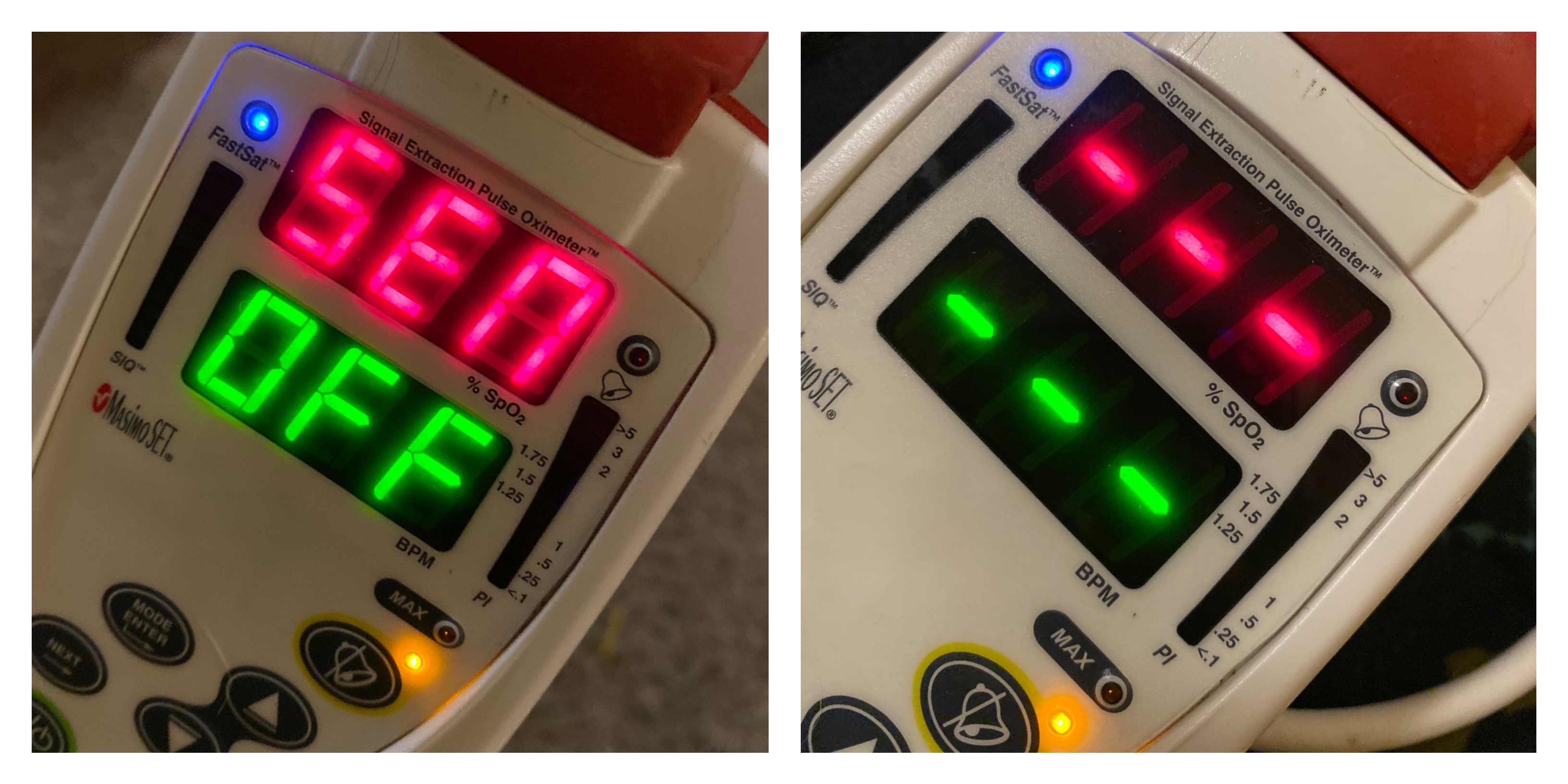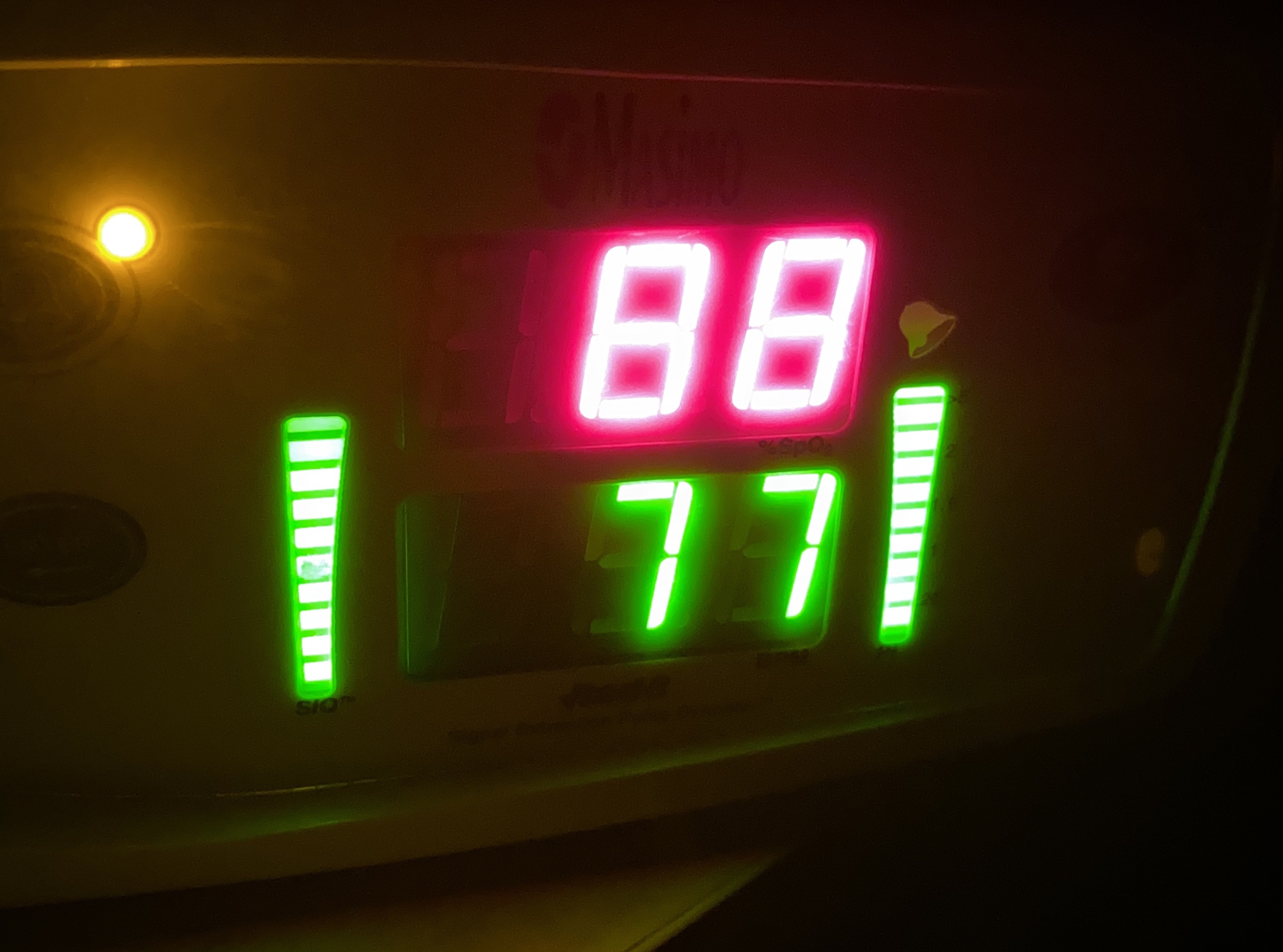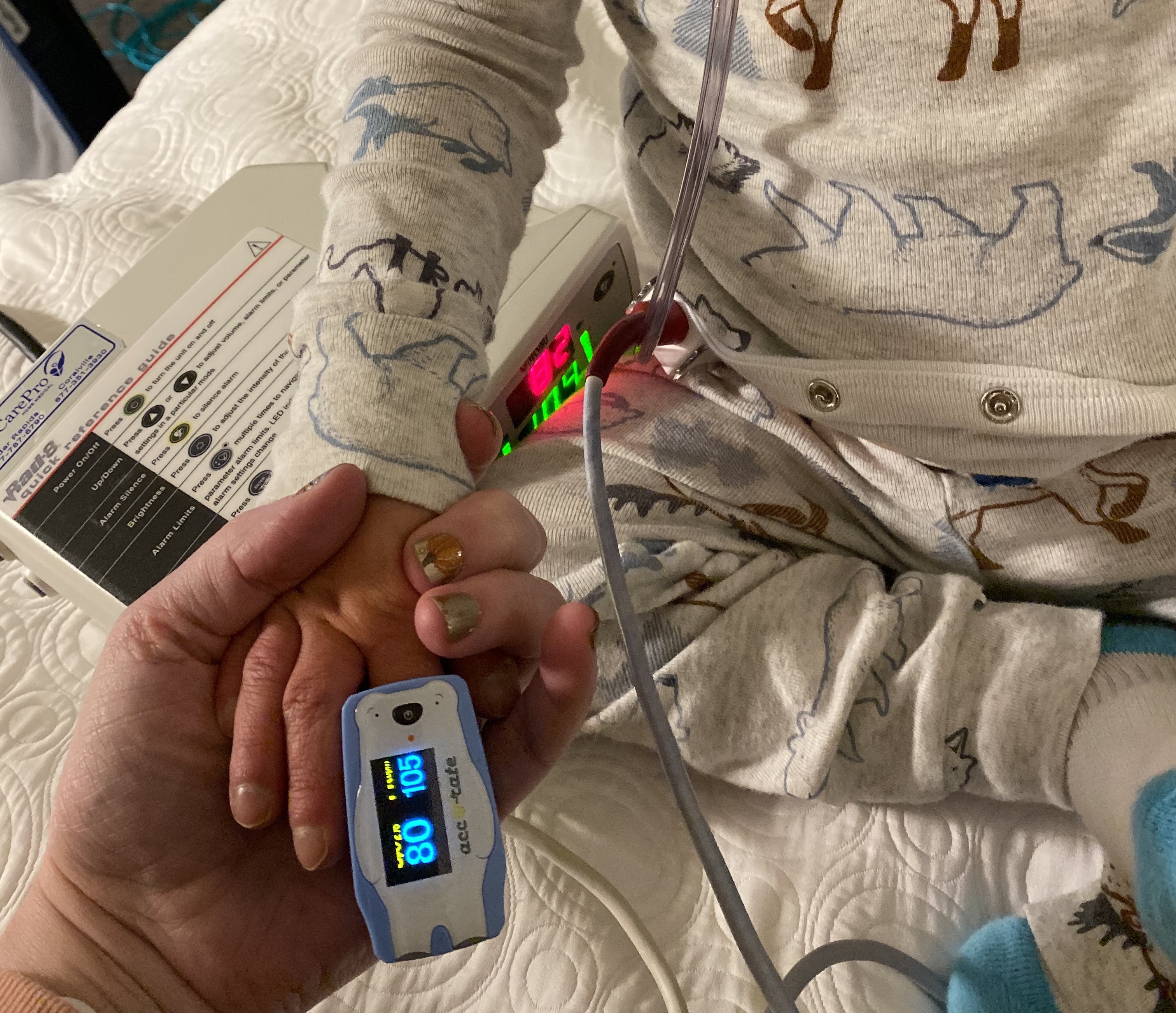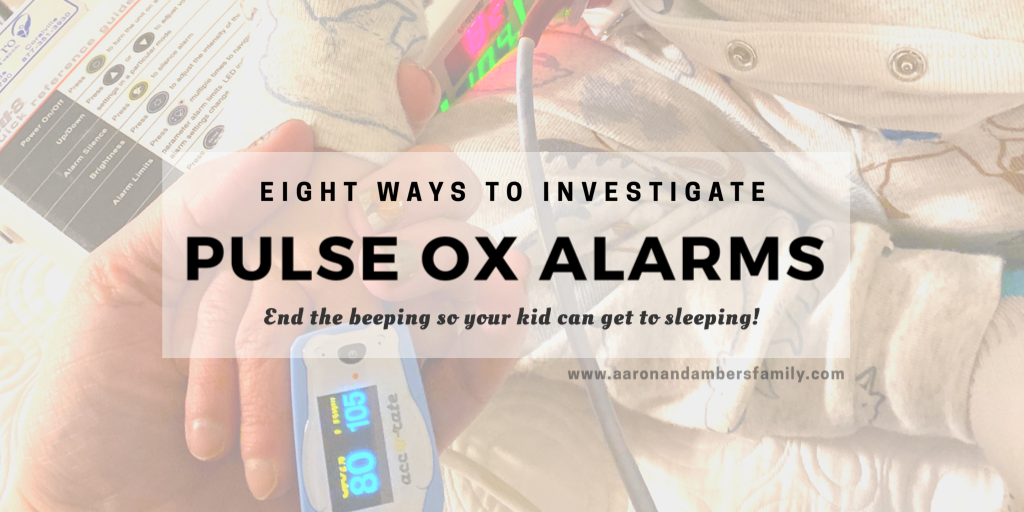The sound of the pulse ox beeping might be the most obnoxious sound ever. On one hand, the machine is amazing and provides so much peace of mind. On the other hand, the error messages and bad readings are enough to drive me mad! Below are eight of our go-to ways to assess whether the reading is accurate or not.

1. Check your kid
I feel like this one should go without saying, but if your kid looks unwell, mottled, blue, pale, etc – then odds are that your machine is working fine and you need to move on to other actions to figure out what is going on. If your kiddo has a trach, or is on oxygen, etc you should make sure that things are in place and connected.

2. Check your signal quality
We have a Masimo Rad 8. The two bars to the sides of our readings show how good of a reading we are getting.
The left side is the “Signal IQ”. It rises and falls in line with the pulse. The signal IQ measures how confident the device is in the numbers that are being displayed. When it’s low, the bars display in red.
The bar on the right side is the perfusion index. This measurement tells you how strong the pulse is that the machine is picking up. It also turns red when the reading is low.

In order to ensure a good reading, both of those bars should be in the green. If they aren’t, you should try relocating or repositioning.
3. Reposition or Relocate
Either reattach it or reposition the sensor – or both! Even if the signal and perfusion index numbers look good, sometimes you might just not be getting the best reading.
4. Listen Directly
Odds are you have a stethoscope handy. If you don’t you can get an affordable one on Amazon.

5. Try it on Yourself
If it’s jumping around or reading low on you too, something is probably wrong with the probe, cable or machine.
6. Try a second monitor
Insurance doesn’t cover multiple pulse ox monitors without a fight. We didn’t actually get our second monitor through insurance. Instead we asked around to other heart moms and snagged a finger tip pulse ox monitor off of Amazon that was under $30.
Gotta tell you – I love this thing. It’s small, portable, and has been accurate for us – even at lower oxygen saturation levels!

Check your numbers on both machines at the same time to see if they correlate. They might not match exactly, especially if your kiddo fluctuates like AJ, but chances are that if they are reading roughly the same, that the reading is accurate.
7. Secure the sensor probe
Make sure the probe is securely attached. We wrote a whole post about ways to do this too.
8. Try Another Sensor Probe
If all else fails, you may have to concede to opening another sensor probe. Before pitching the old one though, try placing it in a different spot so you can compare the numbers.

Bonus: Check with Your Team
As AJ has gotten older, some of his limits on his machine have needed adjustment. Anytime you’re seeing chronically lower numbers you likely should discuss it with your team.
AJ’s heart rate dips into the upper 50’s overnight. Although it’s not where his team wants him to be, they’re aware it happens. We do regular holter monitor studies to keep an eye on it, but the current consensus is that we don’t panic unless it stays there for an extended period of time. Because of this, his team was okay with adjusting his lower limit for his heart rate.




